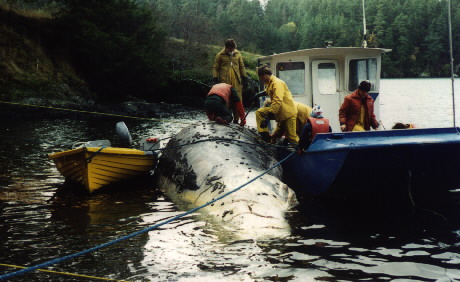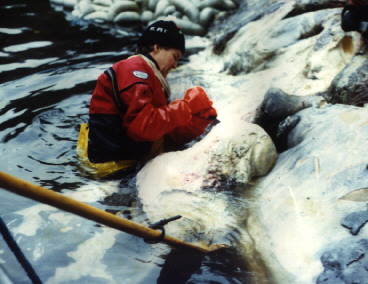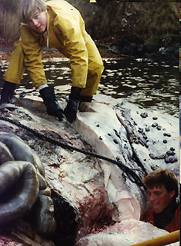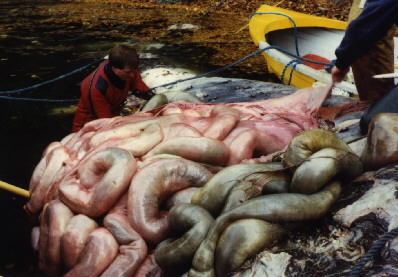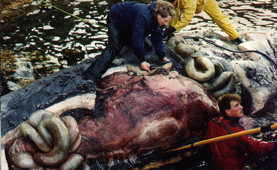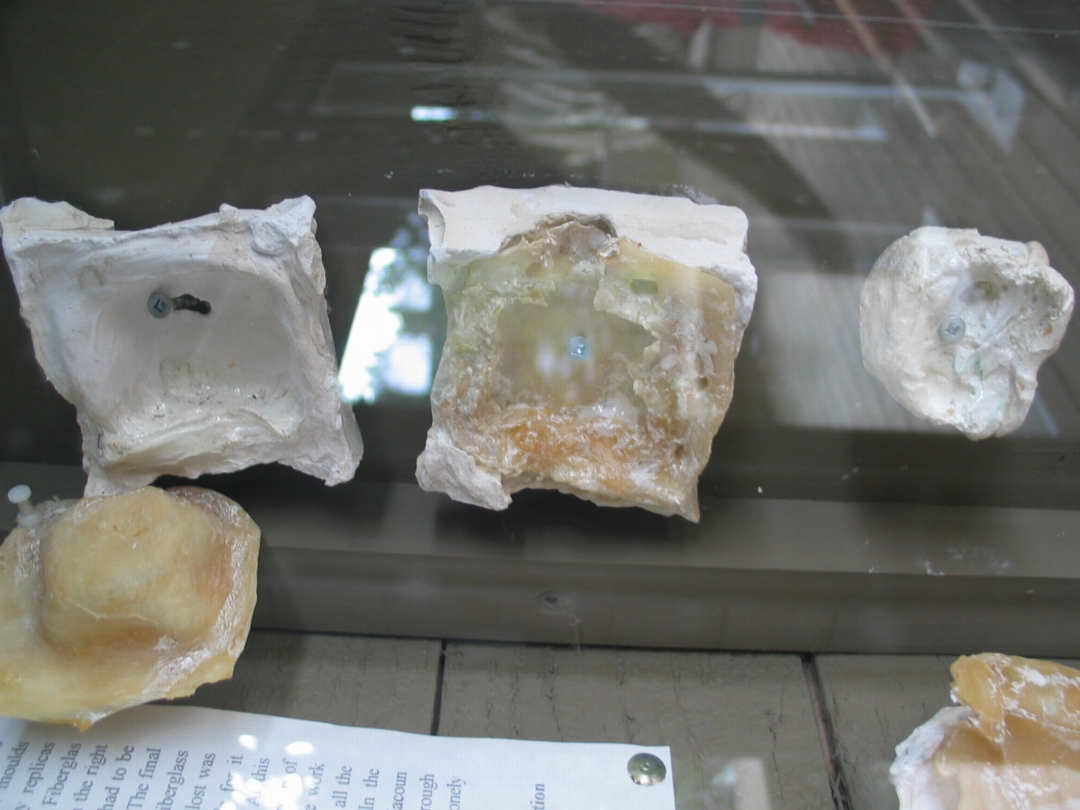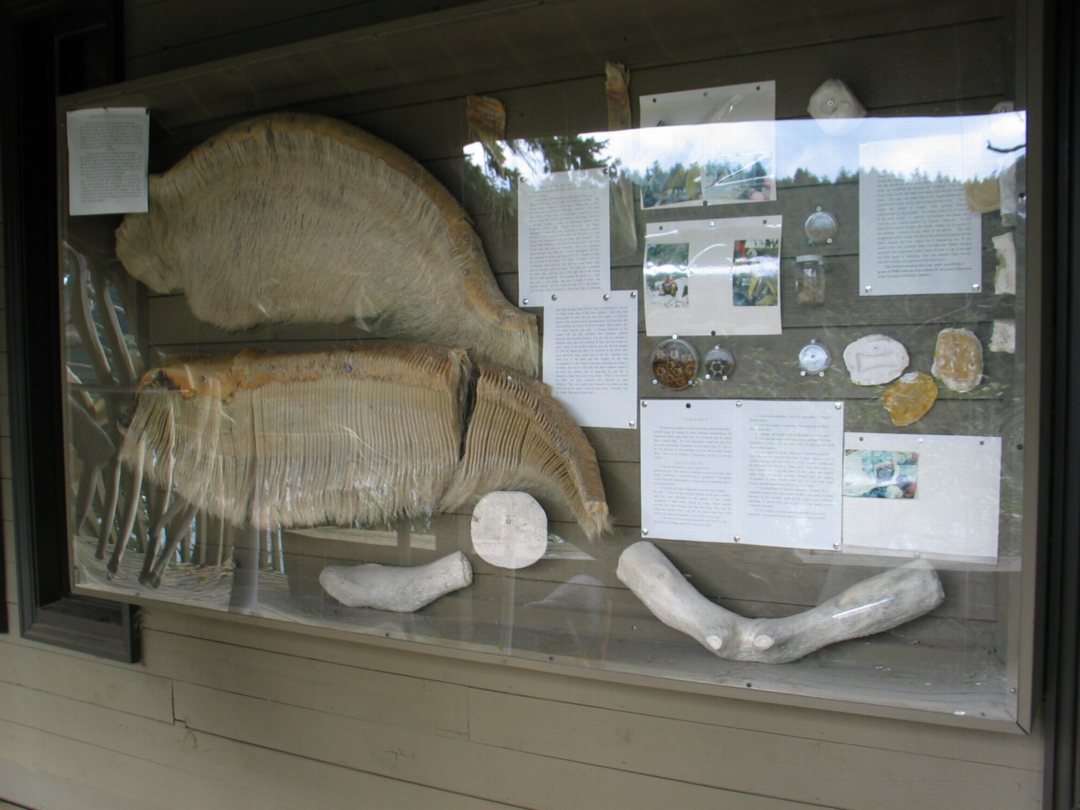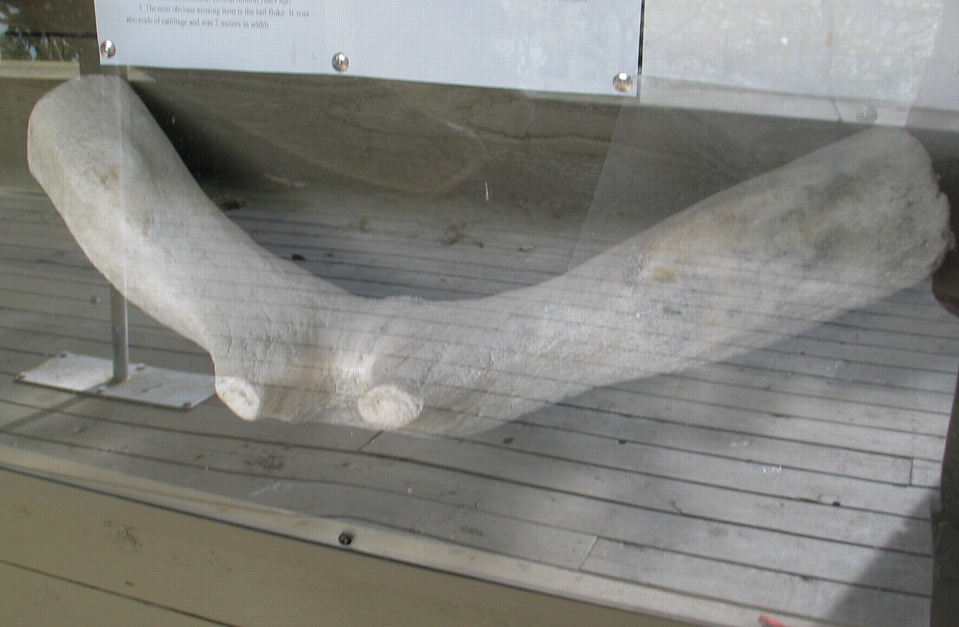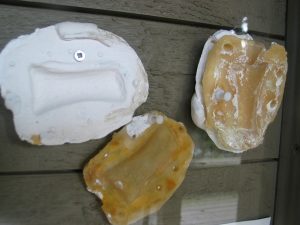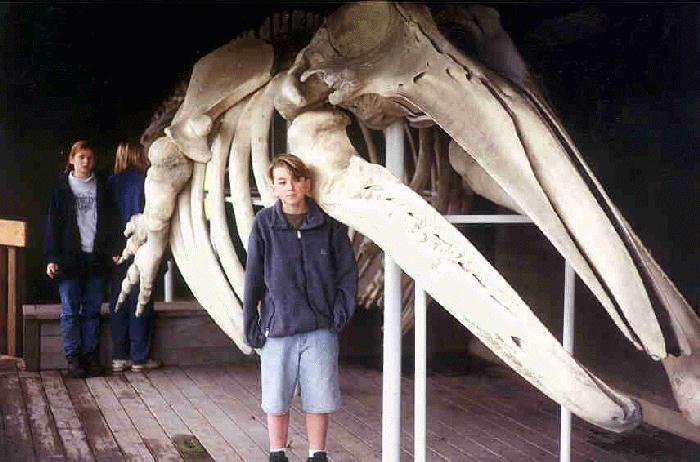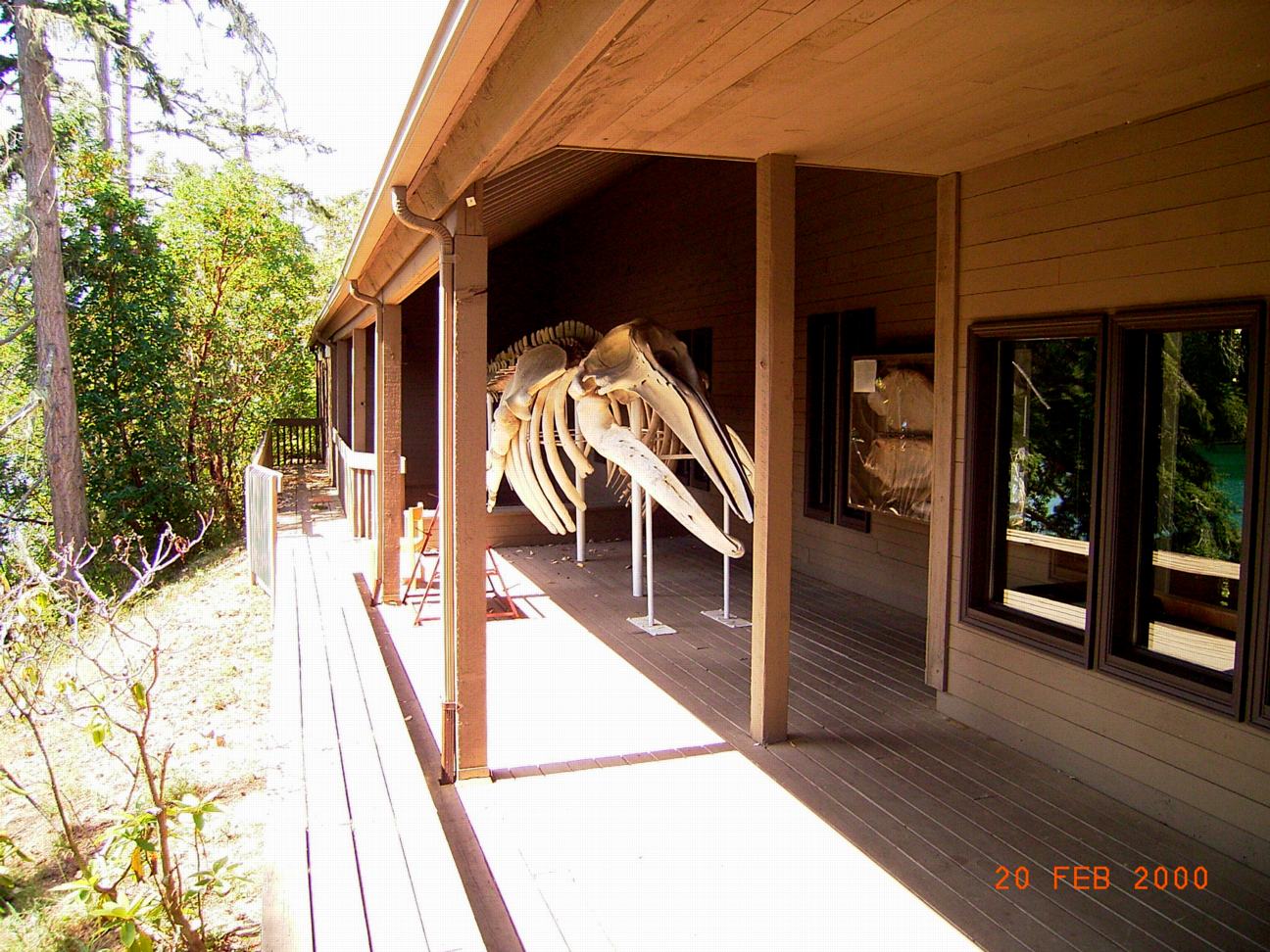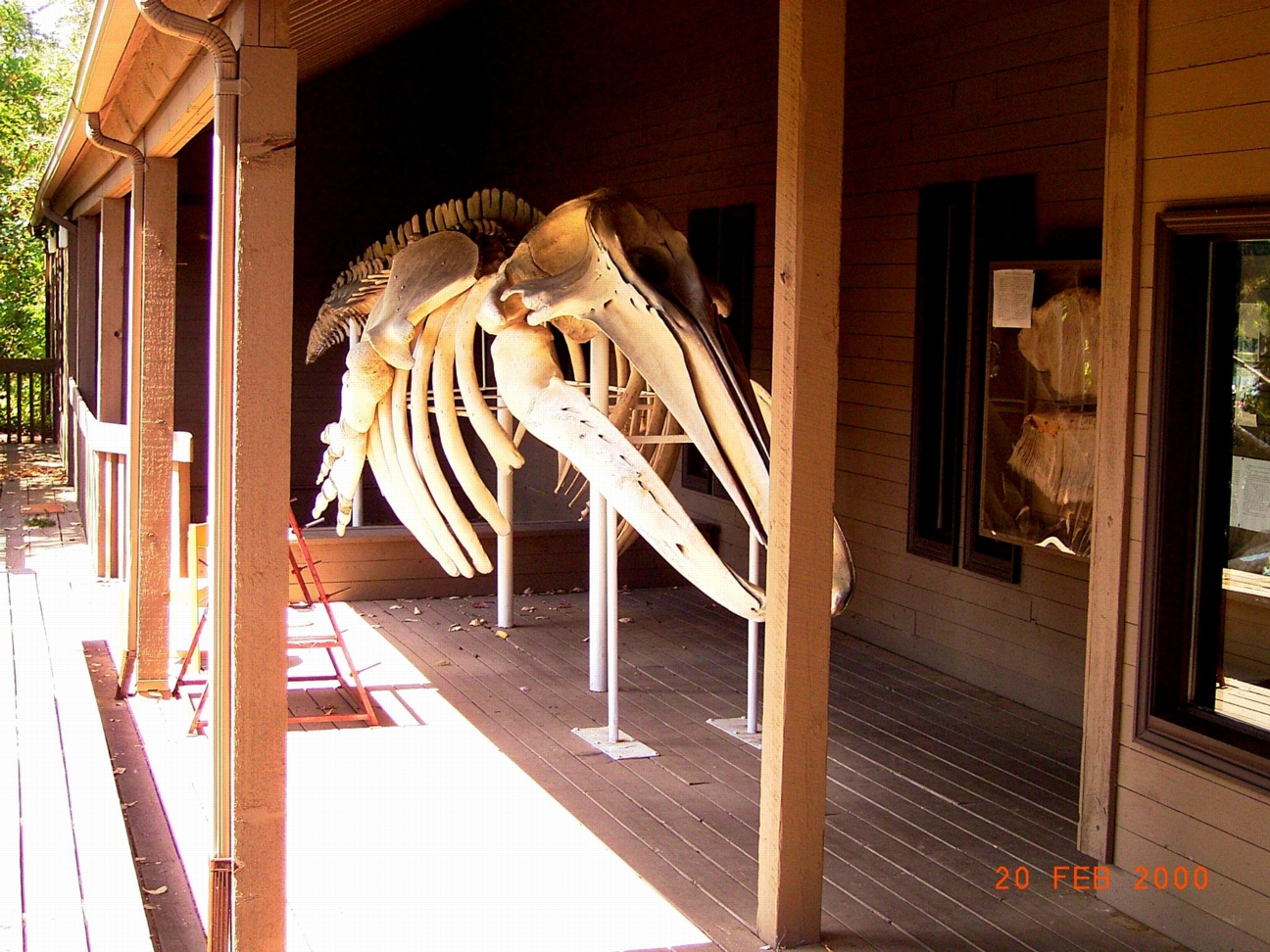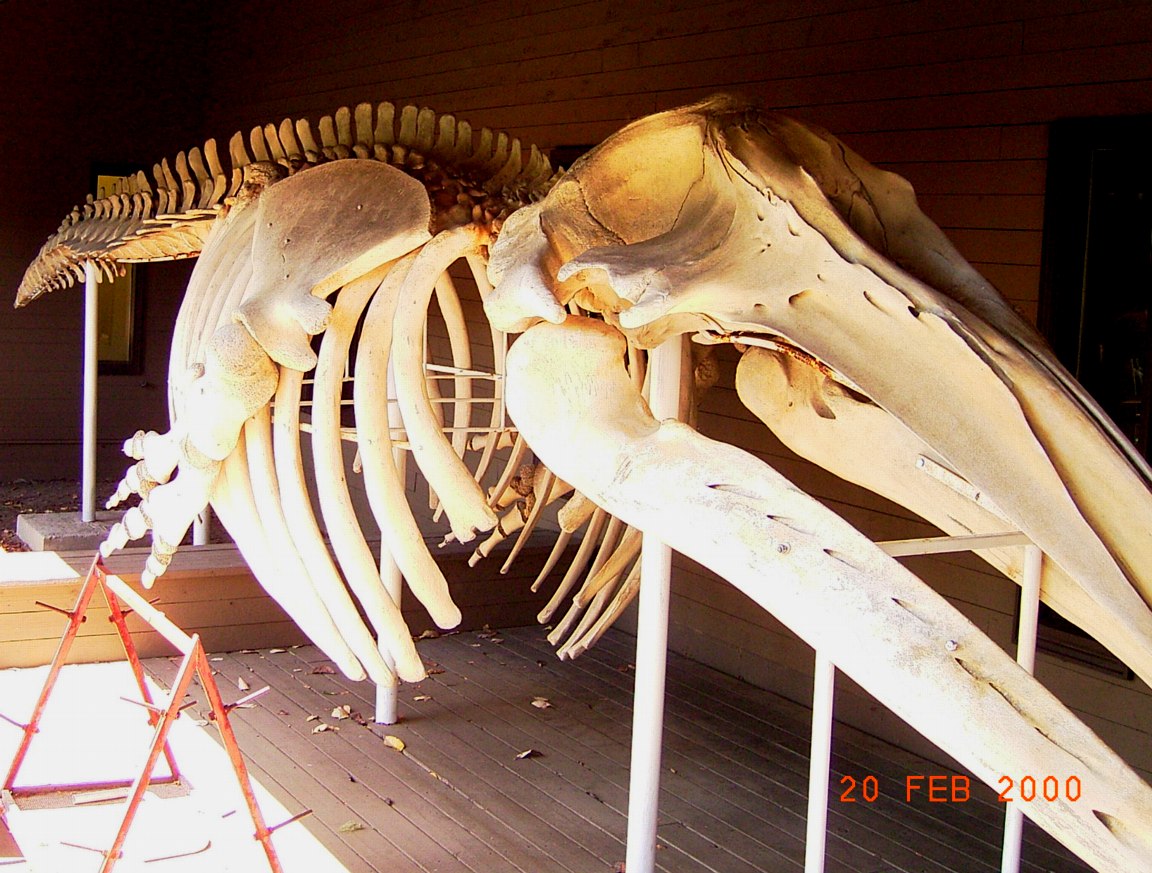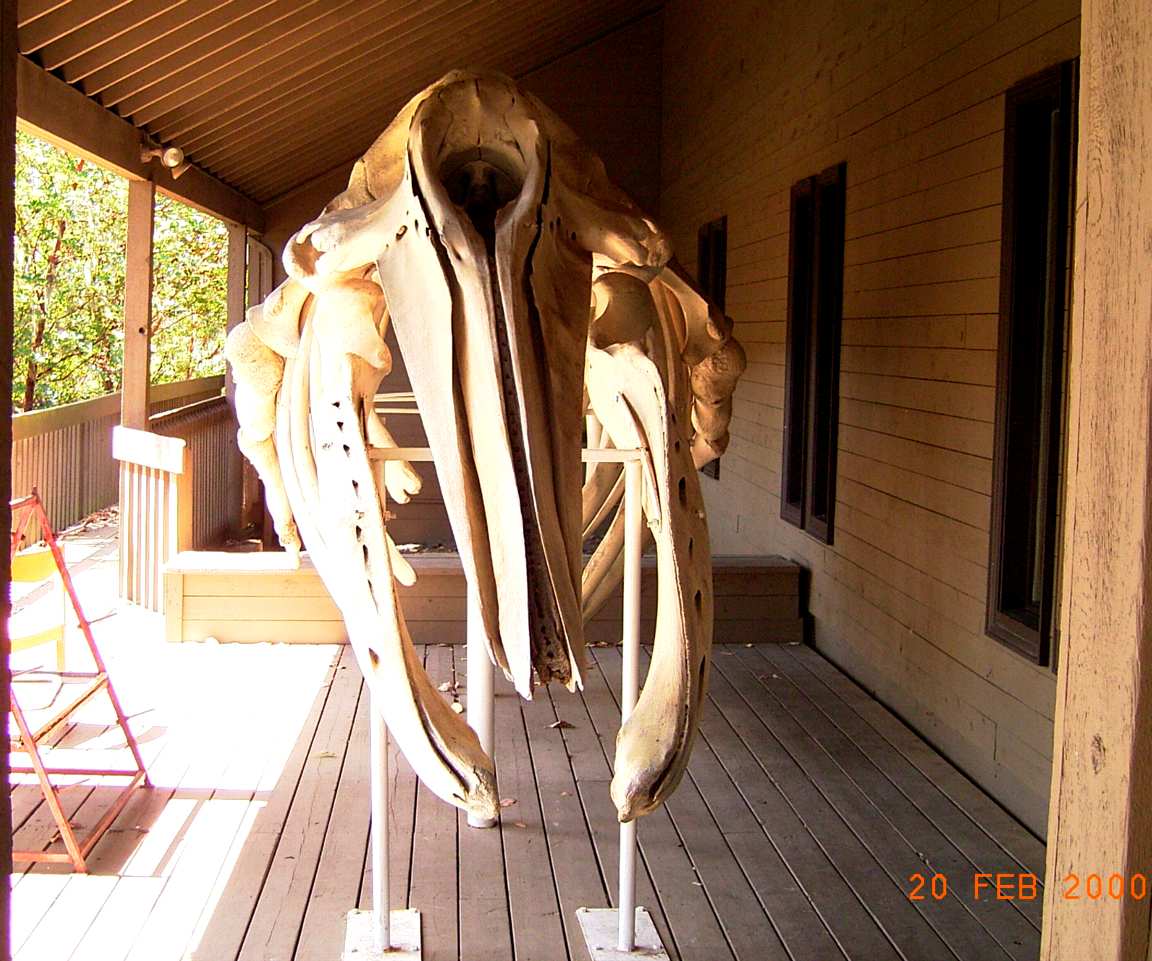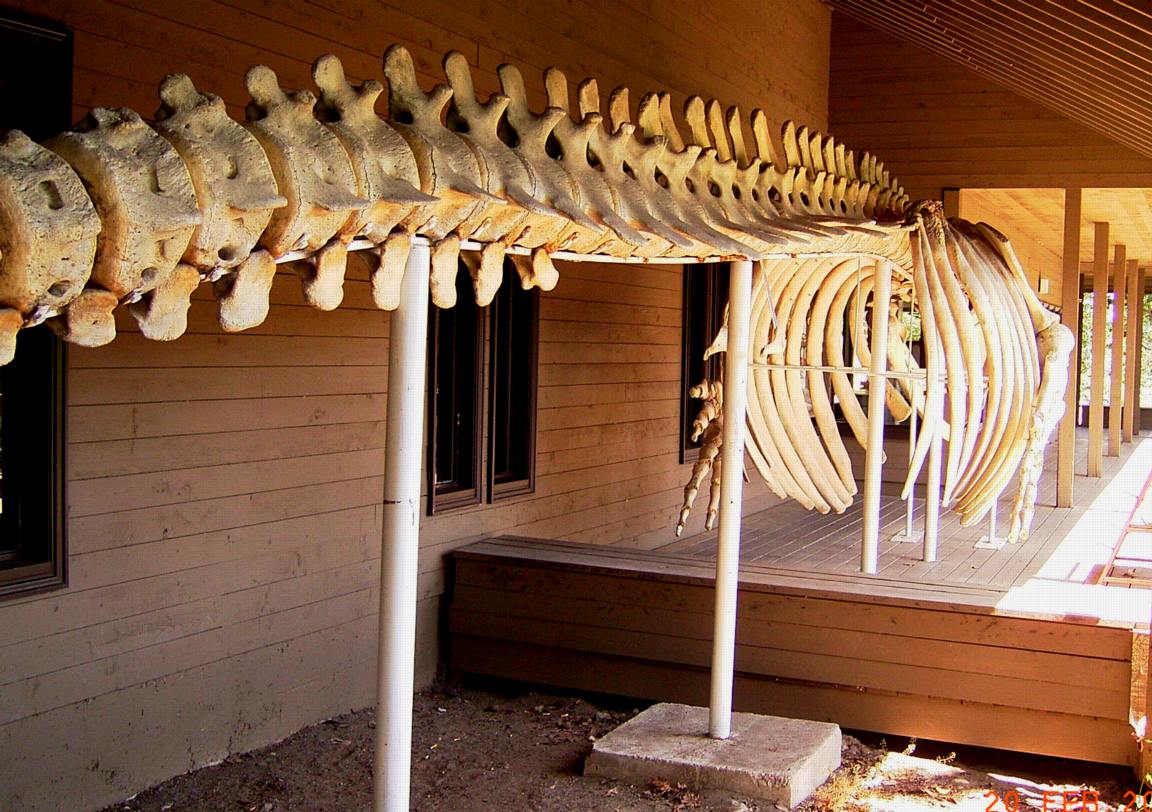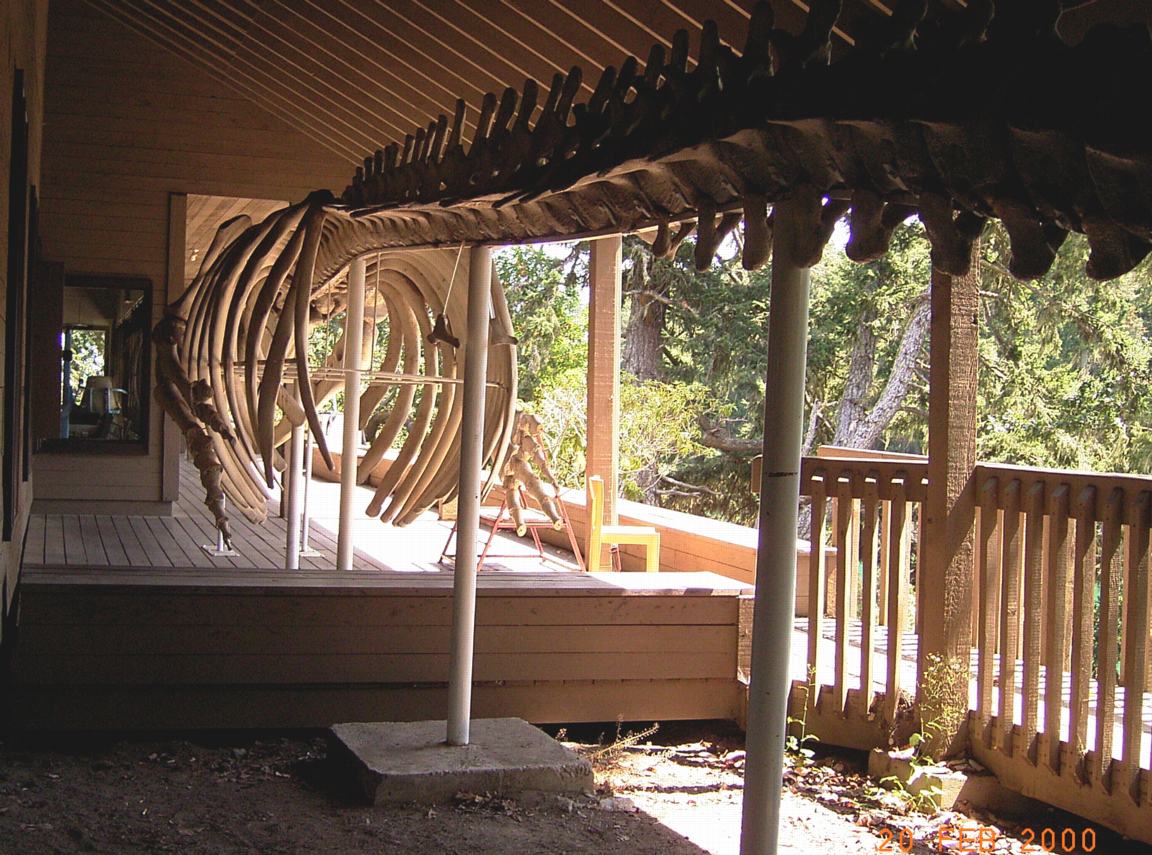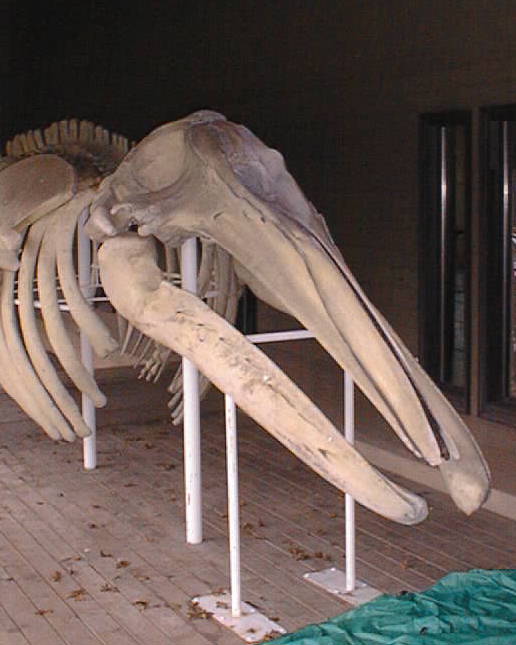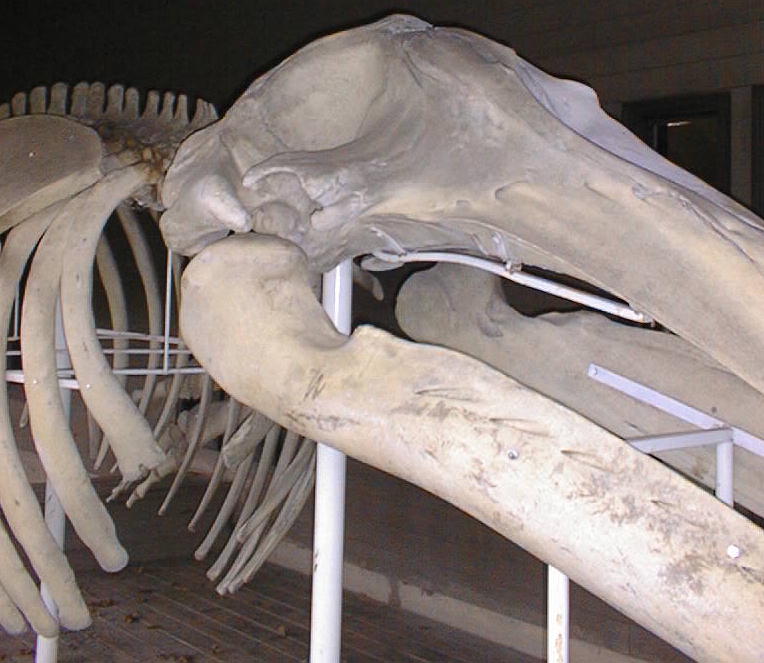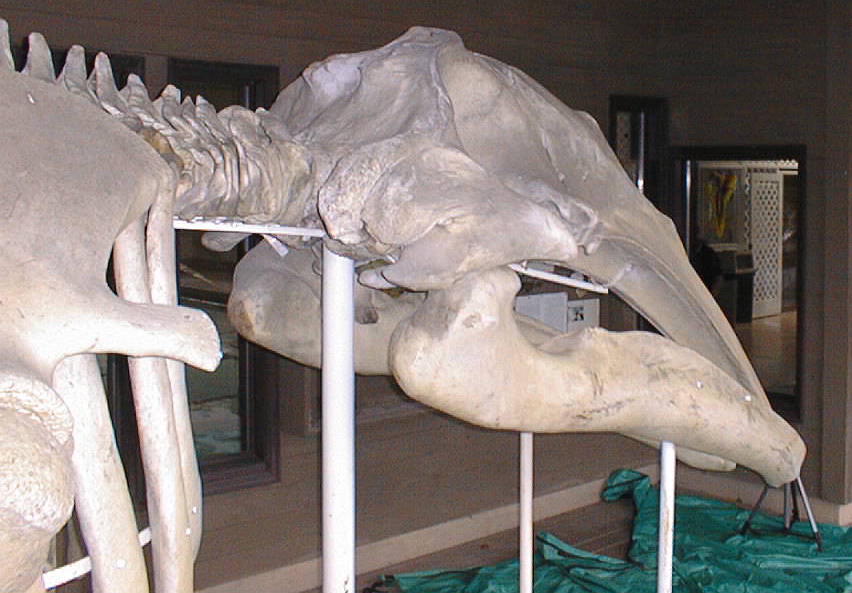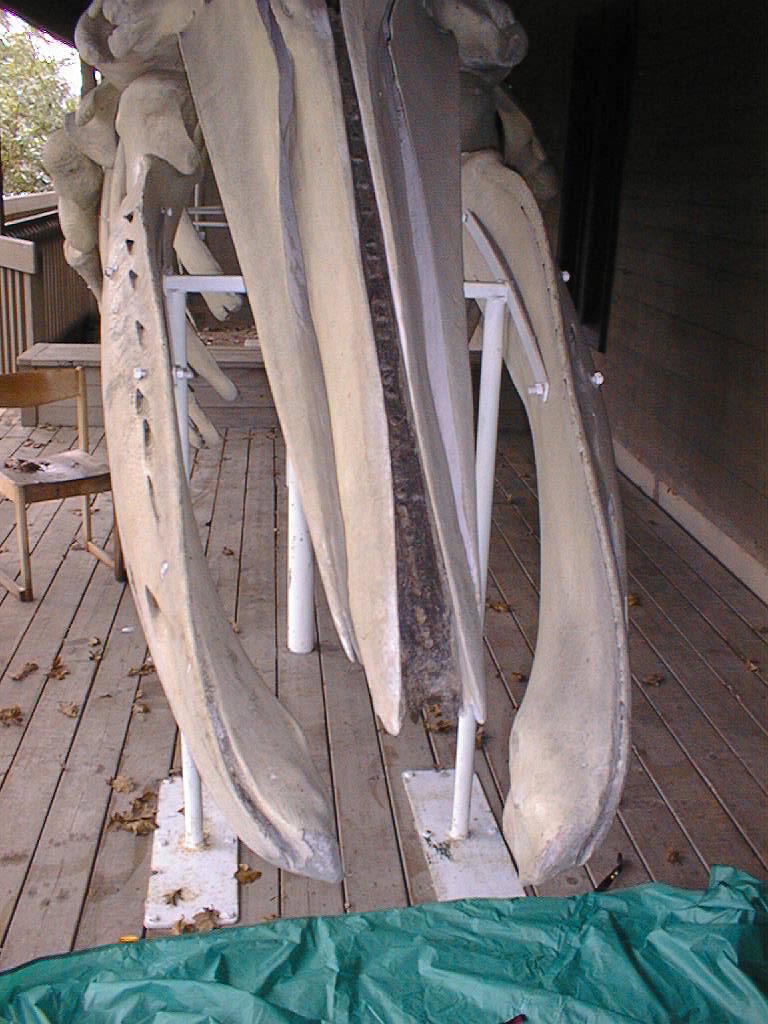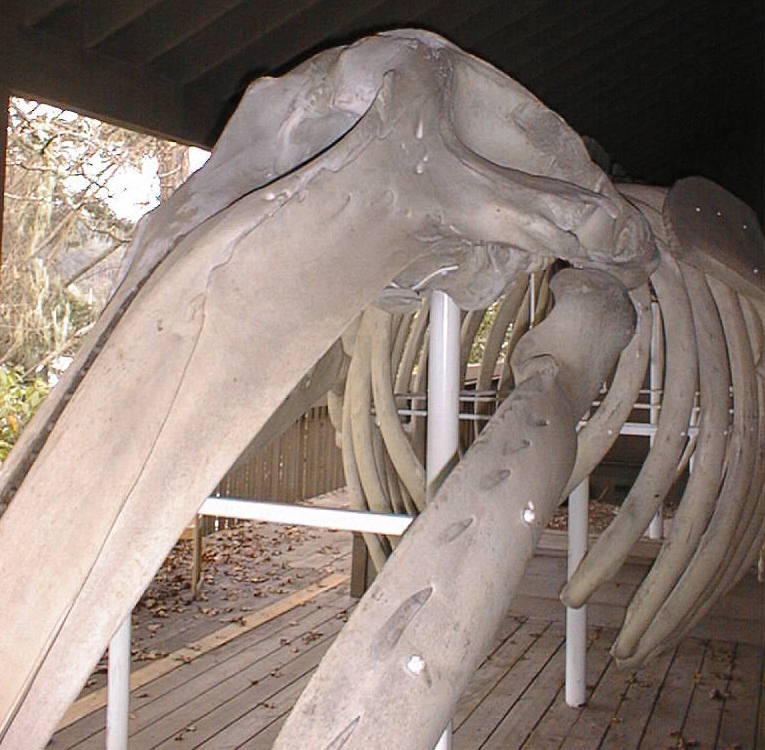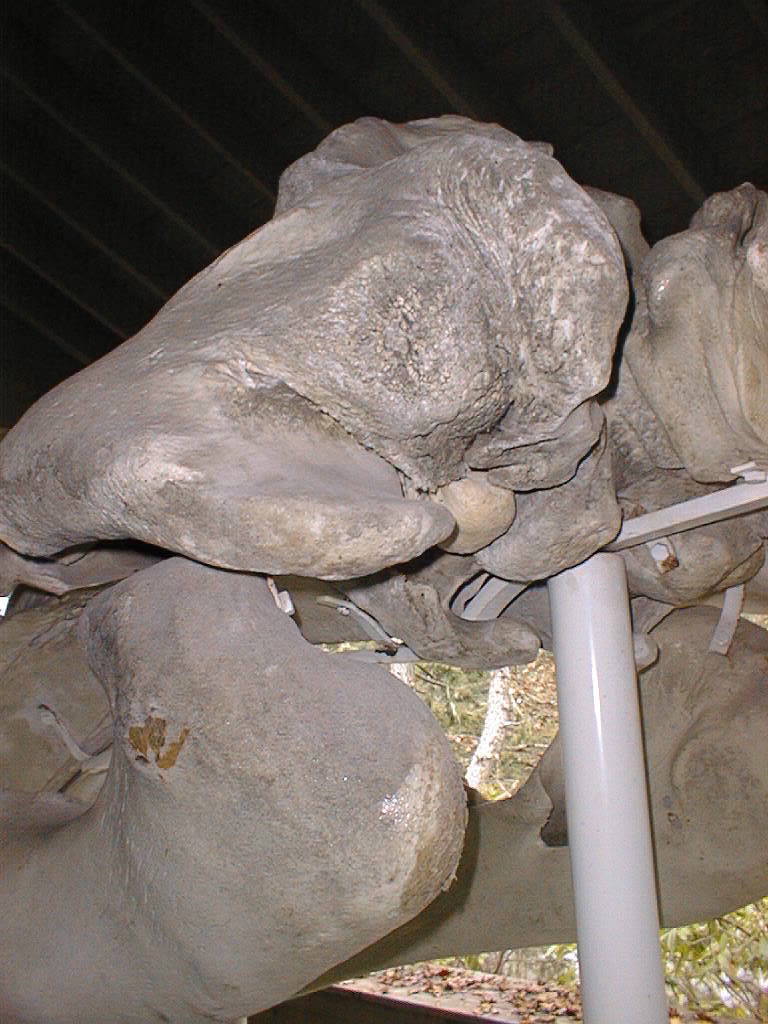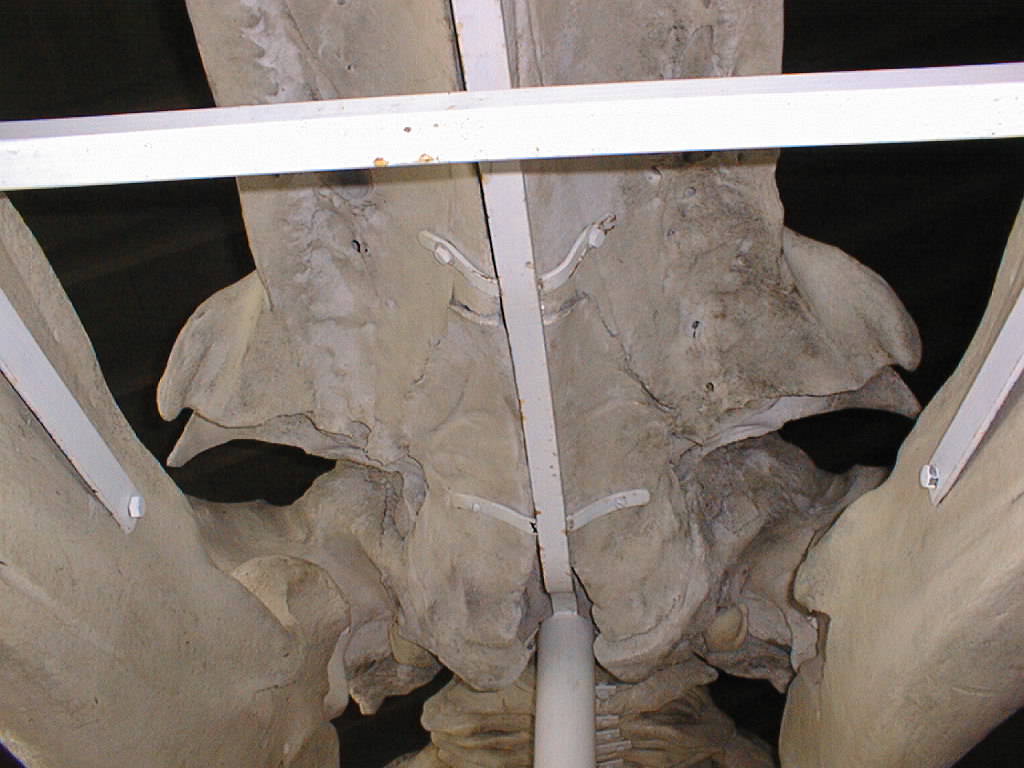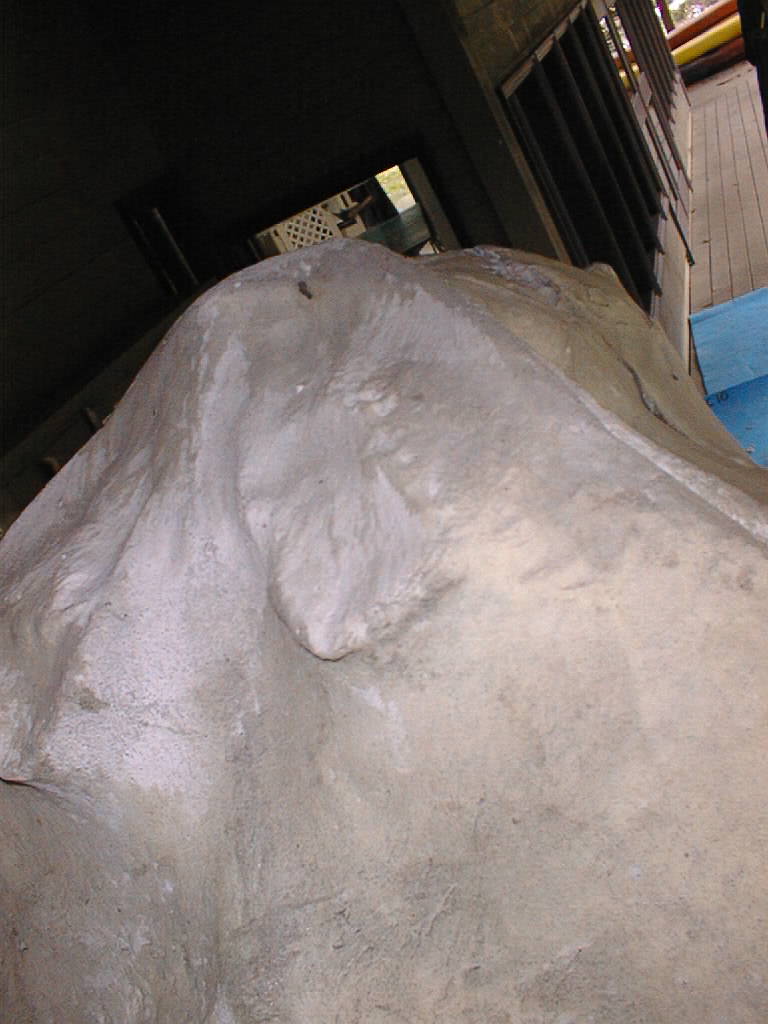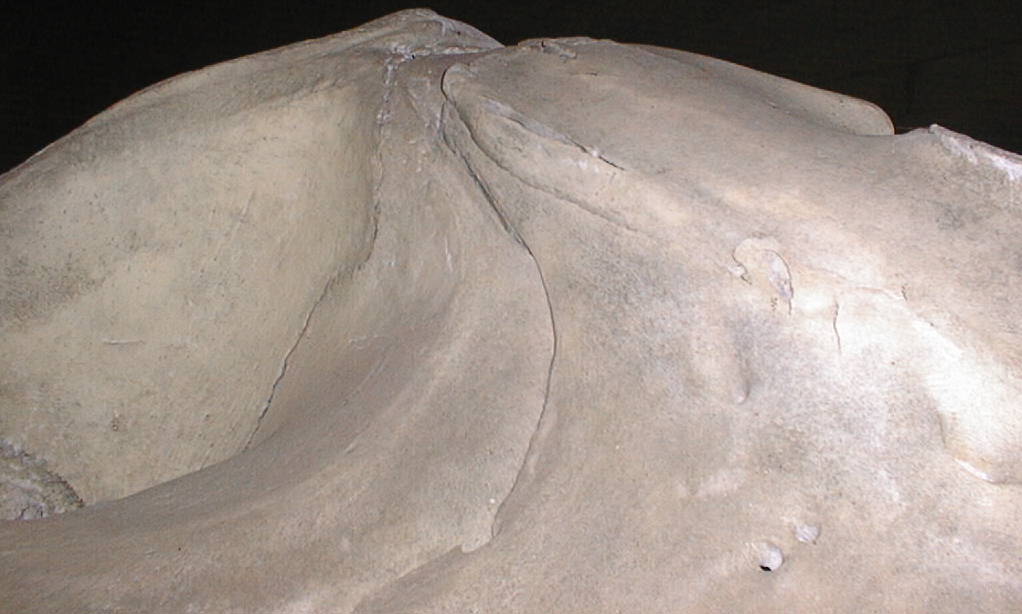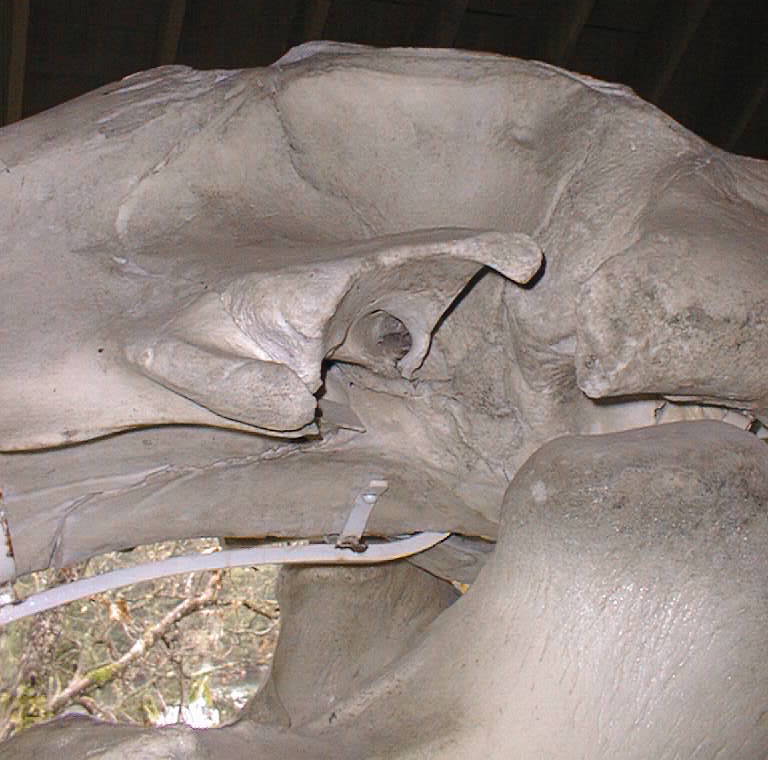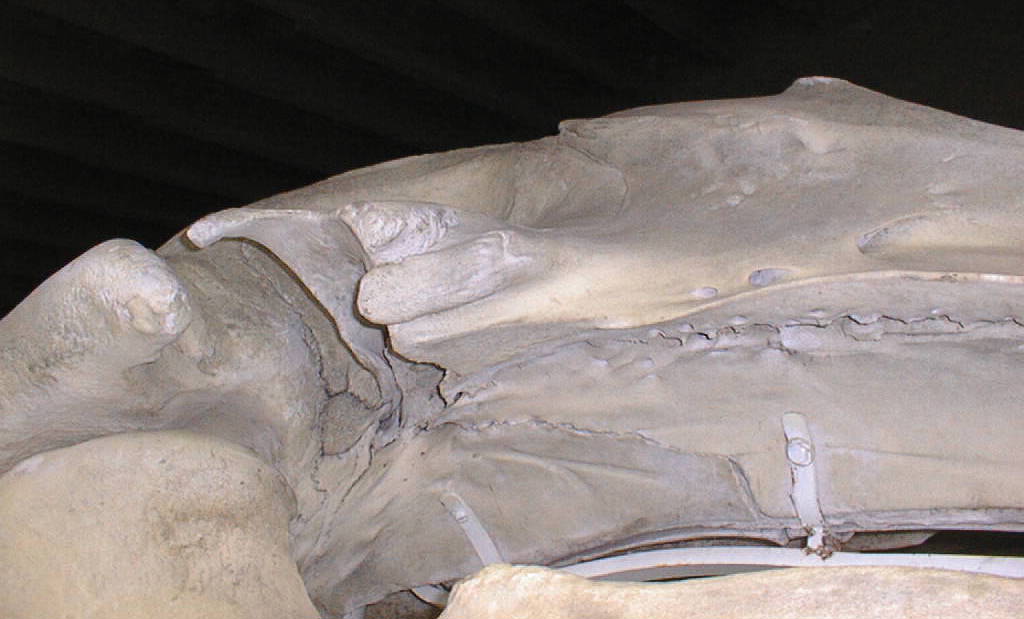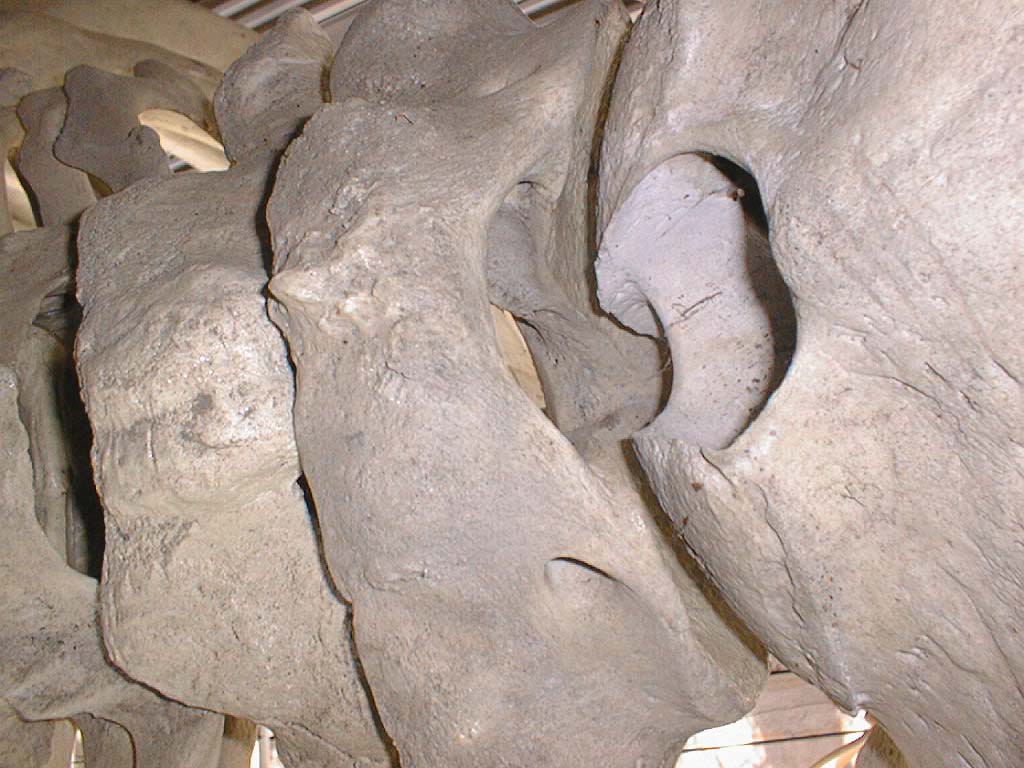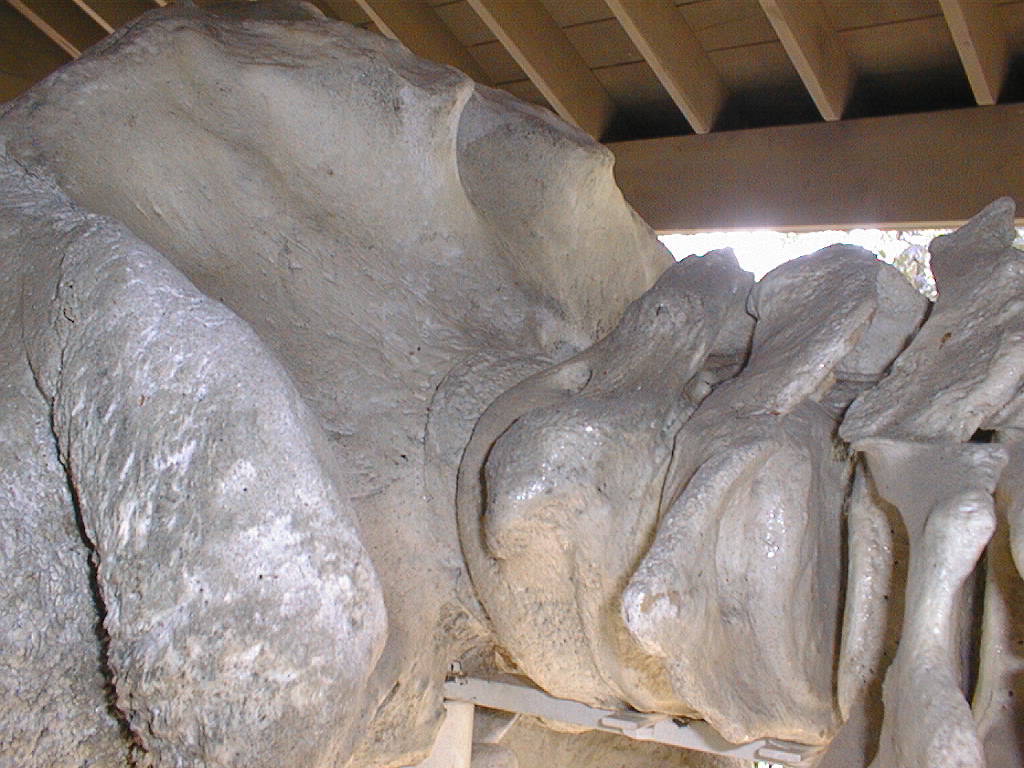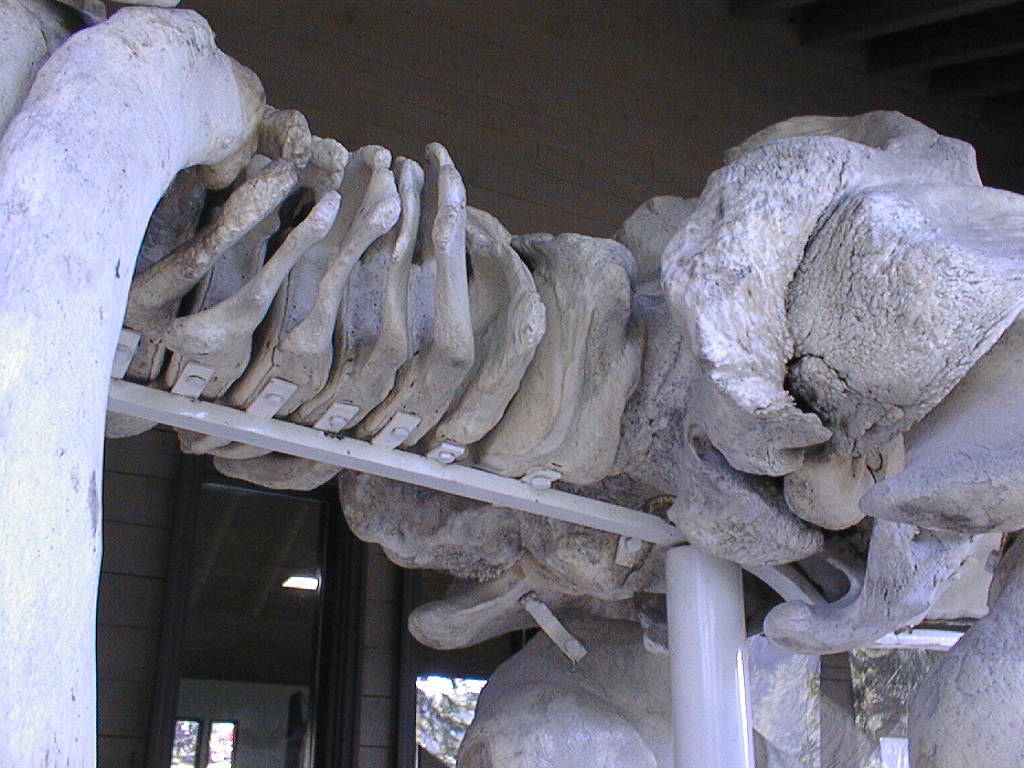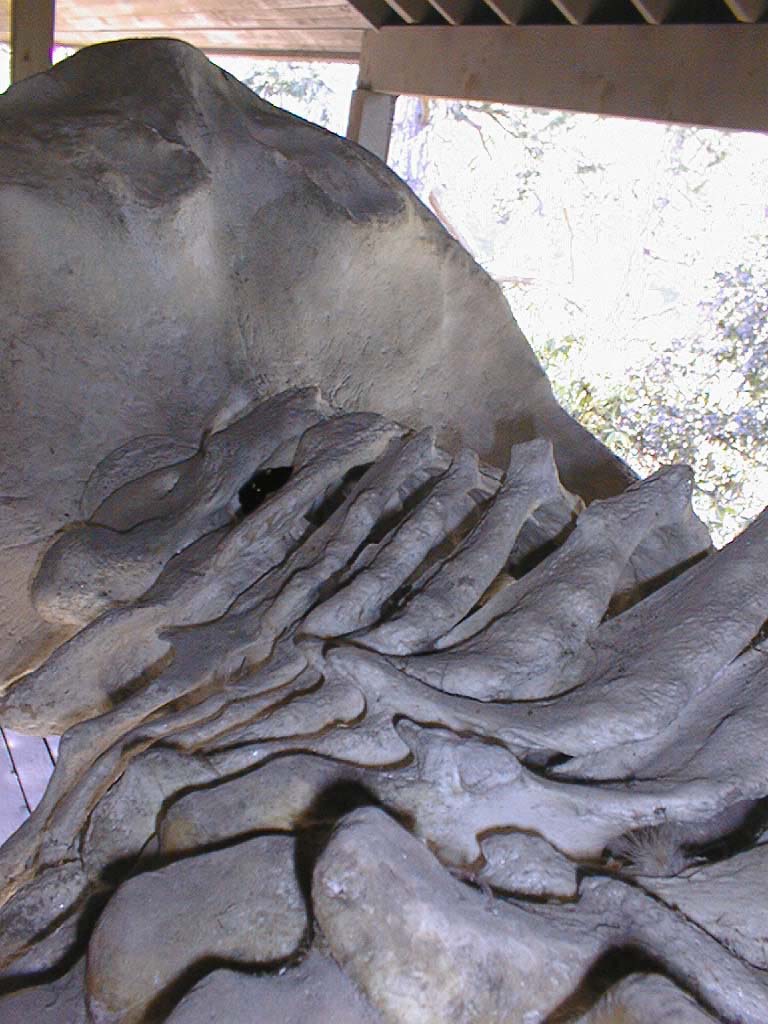n November 1990, students and faculty took on a project of preparing and mounting the skeleton of a Gray whale that had been found floating near shore, dead in the Strait of Juan de Fuca, West of Race Rocks.
- Early on a Saturday morning a group of determined people, Kalle Kronholm, Chris May, Brian Heard, Shawn Steil, Patrick Decowski, Jacob Breugem, Brian Poston, Luis Marcano ,and Rosy Mackintosh along with biology faculty member Garry Fletcher and his son Alex
- and two volunteer students from the Biology Department of the University of Victoria, proceeded to attempt to remove the flesh
- Kalle Kronholm flensing the whale. It was almost an impossible task. The knives we used became dull immediately, and the smell was incredible. The mature adult female had been dead for about a week. Very little of the outer skin had been disturbed.
- We anchored the carcass in a small bay closer to the college, and tried to weight it down with concrete buckets. 1000 kgs would not sink it so it was tethered and left there. Over Christmas it broke loose from it’s mooring in a storm and ended up further down the bay at Weir Point. It had however dropped it’s baleen intact where it had been tethered. These were later recovered by the divers and dried for the display here.
- From this final resting place on shore over the next two months, we removed bones as they became free by decomposition. We found that any piece touching the bottom would be cleaned rather quickly, and if it wasn’t removed soon after, it became blackened by the contact with the mud, probably from hydrogen sulfide build-up from anaerobic bacteria. You can still see a number of darkened areas that were produced in this way and would not clean. Some of the smaller vertebrae near the tail had dropped off with the baleen and had to be retrieved after some searching by the divers. Many pieces such as the tail vertebrae were taken back to the docks and tied together for the final decomposition on the bottom.
- Gary Stonely of Nanaimo,a vertebrate zoologist who had worked on other large skeletons, vertebrae mold was commissioned in the fall of 1991 to work with our students once a week in the final stages of skeletal preparation. He showed the students how to mould the missing pieces. Shown here are the rubber moulds and the plaster of paris mould-holders, and the clay replicas made for moulding the missing tail vertebrae.
- The display on the wall next to the whale skeleton at Lester Pearson College. The two sides of the baleen plates are shown mounted here.
- The hyoid bones of the lower neck region are not attached to the skeleton. They are displayed here in the case
Even after retrieving the bones to the docks, they had to sit for some time and many students helped in the slow and arduous task of removing the last bits of connective tissues that clung to the bones. While the decomposing remains were anchored to the shore, two large vertebrae were removed by some fishermen. They were traced and eventually recovered but they show up now as slightly yellowed and cleaner. (Probably from the bleach used to clean them.)
The Fiberglass finger bone on the left hand was made from the one on the right hand. This task took some time as the liquid rubber had to be painted on in many layers, each being allowed to dry. The final results are visible as slightly white looking fiberglass replacements on the skeleton. The largest bone that we lost was in the neck region. A concrete replacement was made for it from the clay replica moulded by Siegmar Zacharias . At this time Sylvia Roach became the faculty contact for the group of six students working on the whale as an activity. The work progressed slowly during the fall as the process of getting all the bones cleaned and then sealed was a demanding one. In the second term, two students, Jody Snowden and Becky Macoun persisted and contributed many hours of time to see it through the final stages of mounting. They also assisted Gary Stonely with the welding, cutting, polishing and painting of the metal parts.
Our former administrator, the late John Davis was instrumental in promoting the project. In addition to taking the photographs in the display case, he was responsible for securing a grant of $5000 from the Ministry of Advanced Education of the Province of British Columbia to enable us to complete the project.
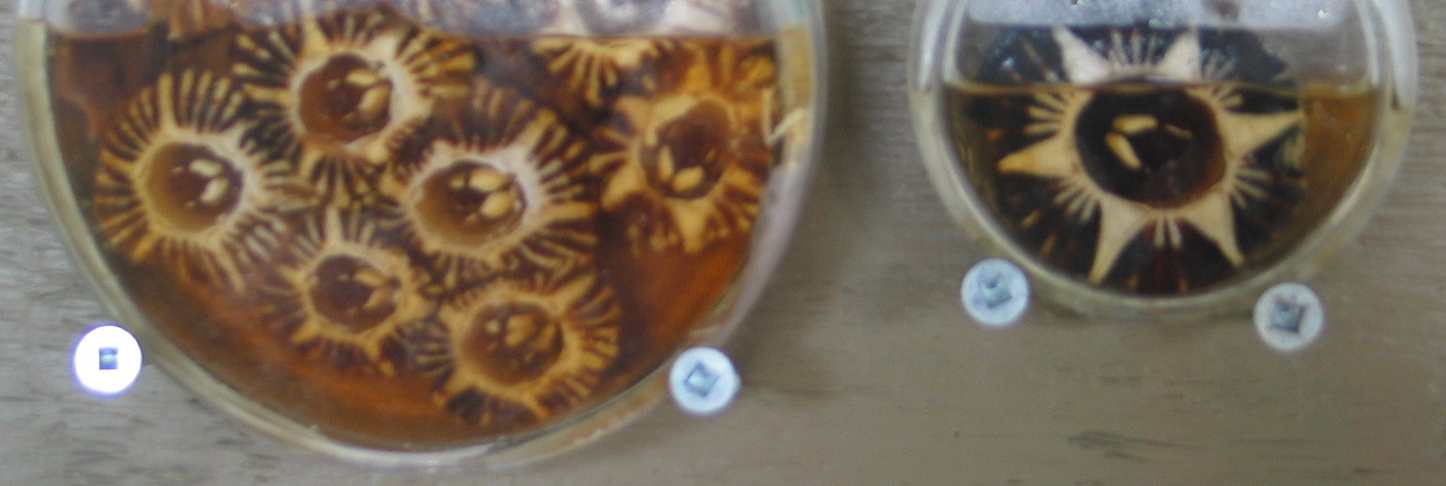 Two species of Arthropod lived parasitically on the whale’s skin. The Gray Whale barnacle, Cryptolepas rachianecti . Also, The Gray Whale Lice Cyamus kessleri was located on the skin.
Two species of Arthropod lived parasitically on the whale’s skin. The Gray Whale barnacle, Cryptolepas rachianecti . Also, The Gray Whale Lice Cyamus kessleri was located on the skin.
THE MOUNTED GRAY WHALE SKELETON AT PEARSON COLLEGE
- Gray Whale Skeleton
- View from head
- backbone
- view from tale
INGI FINNSON (PC-Year 25) took this series of closeup photos for a project being done by a scientific artist:
- skull front
- skull right side
- neck and skull right side
- Nose- cartillage remains to hold pieces together
- skull left side
- skull left jaw
- underneath skull
- skull top rear
- skull top left side
- skull left middle
- right condyle
- skull foramen dorsal
- upper left side
- neck vertebrae
| Domain | Eukarya |
| Kingdom | Animalia |
| Phylum | Chordata |
| Class | Mammalia |
| Order | Cetacea |
| Sub Order | Mysticeti |
| Family | Eschrichtiidae |
| Genus | Eschrichtius |
| Species | robustus |
| Common Name: | Gray whale |
Title: Taxonomy of the gray whale
Description:
Gray whales have mottled gray skin which sometimes seems to look slate-blue or marbled white and its head arches between its blowhole and snout – grey whales have relatively small heads. They don’t have a dorsal fin; instead there is a low hump with between 6 and 12 knuckles between the hump and the tail. Their flippers are small and paddle-shaped. Their baleen plates are about 50cm in length. Gray whales have what look like yellow spots on their skin, these are, in fact, small parasitic crustaceans. Many cetaceans are infested with these although not always the same type – some parasites live on only one type of whale. The gray whale is more heavily infested with a greater variety than any other cetacean. They do not seem to harm the whale in any way although when they leave the whale’s skin in warmer waters it still shows the scar.
Yankee whalers named the gray whales “devilfish” because they were so protective of their young when approached, often charging or attacking whalers. Today, they are better known for being not only one of the most active of the large whales but also one of the most inquisitive and friendly.
• The scientific order Cetacea includes all whales. This large order is further divided into three suborders: the toothed whales or Odontoceti (killer whales, dolphins, porpoises, beluga whales, and sperm whales), the baleen whales or Mysticeti (blue whales, humpback whales, gray whales and right whales), and the Archaeoceti (which are all now extinct).
• The word “cetacean” is derived from the Greek word cetus, which means whale.
Suborder–Mysticeti.
• The term “baleen whale” is another name for the scientific suborder Mysticeti.
• The word Mysticeti is derived from the Greek word for moustache, mystax. It may refer to the hairy appearance of the baleen plates, which baleen whales have instead of teeth. Baleen whales have two external blowholes and are larger in size than most toothed whales.
• Baleen whales are sometimes referred to as the “great whales.”
Family– Eschrichtiidae
• This family has one living member, the gray whale. The gray whale has a few throat grooves, short baleen plates, and a small dorsal hump followed by a series of bumps.
Trophic level:
Because of their relative size, gray whales are usually at the top of the food chain:
Main danger to whales:
Ed note : since this was written , there is a greater recognition now of the danger to whales by ship strikes and ship casued noise in the seascape which interferes with the whales echolocation
• Whalers, who kill whales to sell their meat.• Human activities such as pollution. Currently( 2006, both Japan and Norway still pursue whales ( Minke and others) under the guise of scientific whaling. Japan harvests several hundreds from the waters of the Antarctic, and Norway gets theirs from the North Sea.
(Chinyere Amadi PC Yr 31 2005)
and Image File |
 The Race Rocks taxonomy is a collaborative venture originally started with the Biology and Environmental Systems students of Lester Pearson College UWC. It now also has contributions added by Faculty, Staff, Volunteers and Observers on the remote control webcams. The Race Rocks taxonomy is a collaborative venture originally started with the Biology and Environmental Systems students of Lester Pearson College UWC. It now also has contributions added by Faculty, Staff, Volunteers and Observers on the remote control webcams. |

